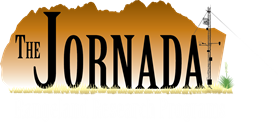| Title | Water balance and assimilation efficiency of the horned lizard, Phrynosoma cornutum: a field study |
| Publication Type | Thesis |
| Year of Publication | 1975 |
| Authors | Edwards JWyatt |
| Number of Pages | 21 |
| Date Published | 1975 |
| University | New Mexico State University |
| City | Las Cruces, New Mexico |
| Thesis Type | M.S. Thesispp |
| Call Number | 00058 |
| Keywords | dissertation, dissertations, lizard, horned lizard,Phrynosoma, lizard,Phrynosoma, lizard,physiology, Phrynosoma,metabolism, Phrynosoma,physiology, theses, thesis |
| Abstract | Assimilation efficiency, water gain and water loss were estimated for Texas horned lizards (Phrynosoma cornutum) studied in the field. Total water gain by the animals averaged 6.3 mg g-1day-1. The lizards obtained 5.6 mg g-1day-1 (89%) as preformed water in the food, and metabolic water production amounted to 0.7 mg g-1day-1 (11%). The combined urinary and fecal loss of 2.7 mg g-1day-1 averaged 43% of the mean daily intake. Weight losses of the lizards during study periods were taken as evaporative water losses. These averaged 4.3 mg g-1day-1 which was 68% of the total water intake. Water loss exceded gain by 0.7 mg g-1day-1 at the feeding rate which occurred during this study. The water turnover rate of lizards maintaining weight in the field was estimated at approximately 17.0 mg g-1day-1 by the regression of total water intake on weight change. This value and the assimilation efficiency estimated during this study (37.1%) were used to calculate the number of harvester ants (Pogonomyrmex rugosus and P. desertorum) required per month by P. cornutum during the summer. This requirement was estimated at from 30,000 ha-1mo-1 to 34,000 ha-1mo-1, which is about 25% to 28% of the Autumn standing crop of these ants on the US IBP Jornada validation site (estimated at about 122,000 ha-1). |


